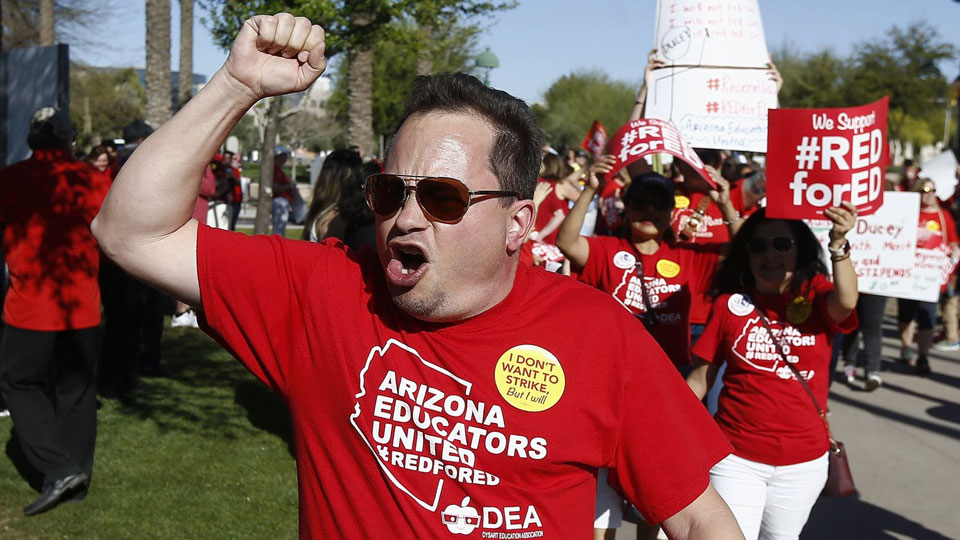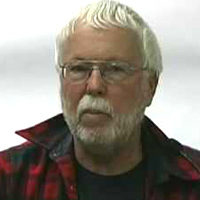
Arizona is full of contrasts. We have both high mountains and the low-lying valleys of the Colorado River; the oldest human settlements within the present U.S. borders going back to 2100 BC as well as lots of new construction for the huge influx of newcomers in the last few decades.
Historically, the lives of Arizona cowboys, copper miners, and cotton field workers were in stark contrast with the lives of their bosses. Today, Arizonans live in one of the most urban states in the country with 70 percent of its population in the Phoenix metro area and 15 percent in Tucson. The class contradiction between the rich and poor is very pronounced.
And Arizona has some of both the best and the worst representatives in Congress. Among the best is Raul Grijalva, Congress’ leading environmentalist, chair of the Progressive Caucus, and the first member of Congress to step forward to endorse Bernie Sanders for president.
Contrast Grijalva with Arizona’s newly appointed Senator Jon Kyl and Rep. Paul Gosar both on the furthest right fringe of their respective houses. Kyl (rhymes with vile), who was brought back to the Senate to replace John McCain, once had members of the Alliance of Retired Americans arrested for trespassing while trying to deliver a letter from retirees to his office.
Governor and State Legislative races
There is a clear contrast between the Democratic and Republican approach to the midterm elections. Arizona is divided into 30 legislative districts, each electing one state senator and two state representatives. All 90 are up for election this fall as well as eight state officers including governor and attorney general, adding up to 98 state offices.
In the August 28 primary, the Republicans failed to nominate any Latino or Native American candidates. These communities make up about 40 percent of the state’s population. The Democratic ticket includes many Chicano candidates, including David Garcia for governor, and several Native American and African American candidates. At least a dozen of these candidates are unopposed in November. There is also a strong contrast in gender representation: the Republicans are fielding 44 men and 24 women for the Legislature, while the Democrats have nominated 45 women and only 38 men.
The Republicans have no candidates for the Legislature in several districts while the Democrats tried to find candidates for all seats. This was a first for the Democrats. They were aided by the uprising of the teachers and other educators who went on strike, supported by parents, students and their communities. Many of the Democratic candidates for the Legislature come out of this movement, and, hopefully, some of the Republicans.
The top races in Arizona will be for governor and to replace retiring Senator Jeff Flake. Centrist Democratic candidate David Garcia is taking on incumbent far-right Republican Governor Doug Ducey. While Ducey has a slight lead in polls, the race is considered a tossup by media pundits. The Democrats are hoping that heavy campaigning by educators and their coalition and Ducey’s support for Trump can make a difference.
Teachers taking the lead
The teachers and supporters had spent all of May and June collecting signatures for a ballot initiative that would tax the richest Arizonans to pay for public schools. After collecting 270,000 signatures in the hottest months of the year, with temperatures often over 110 degrees, the initiative was thrown off the ballot for a minor technicality by the Arizona Supreme Court, three of whose seven members were appointed by Ducey.
The teachers are pissed. Ducey did make concessions to end the teachers’ strike, but Arizonans know that Ducey and the ultra-right dominated Arizona legislature are out to completely gut public education. The teachers’ militancy is in reaction to years of cutting and starving public schools, contracting out to charter schools and privatization through vouchers.
One more Arizona contrast: while the Court threw the measure to increase public school funding off the ballot, a referendum to greatly expand the voucher program remains. The educators’ coalition, strongly supported by labor, is working all-out to defeat it.
Senate race
Two Congresswomen, Democrat Kirsten Sinema and Republican Martha McSally, are in a race to become Arizona’s first woman senator. McSally, who represents the district once held by Gabby Gifford, holds few public meetings and mostly runs ads about how she was the first woman fighter pilot. In the primary, she wrapped herself around Trump, but now she’s back to touting her military prowess and condemning Sinema for her antiwar protests against the Iraq war, claiming it was against the troops.
Sinema had been a peace activist in her student days, but has made a journey to become what some would call a “Hillary Clinton Democrat.”
Analysis
The pundits are calling the race a tossup, but in my opinion, it’s a “leaning Democratic.” Sinema had been leading comfortably in most of the polls until McSally’s really nasty ads hit the TV, but even then, she just drew even with Sinema for three days before falling back again.
Arizona is full of retirees from all over, many who were in school during the Viet Nam War period. I can’t imagine they are very threatened by someone who went to peace demonstrations when in college. It also appears that the national Republican practice this fall is every Democratic candidate for governor or Congress is a socialist, communist, radical, far left, and extreme.
Sinema was, indeed, part of the people’s movement, losing her first election running as a Green. But David Garcia, on the other hand, doesn’t have a left background. Nevertheless, the Republican TV ads are calling him a radical and showing him in pictures that play to racist stereotypes of Latino gangsters, or what’s even more frightening, young Chicano activists.
Former Phoenix Democratic Mayor Stanton is expected to take Sinema’s House seat, but McSally’s seat will probably flip to Democratic former U.S. Rep. Anne Kilpatrick. So, it looks like the Democrats will gain a House seat and have a better than 50 percent chance to pick up a Senate seat.
The race for the Legislature is difficult to assess without polls, but looking at the results from last spring’s election when a congressman resigned, the national trends, the very large turnout by Democrats in the primary, the surging education coalition, and the several hundred thousand new Latino voters registered in the last three years, don’t be surprised if Democrats score some surprising wins in Arizona.










